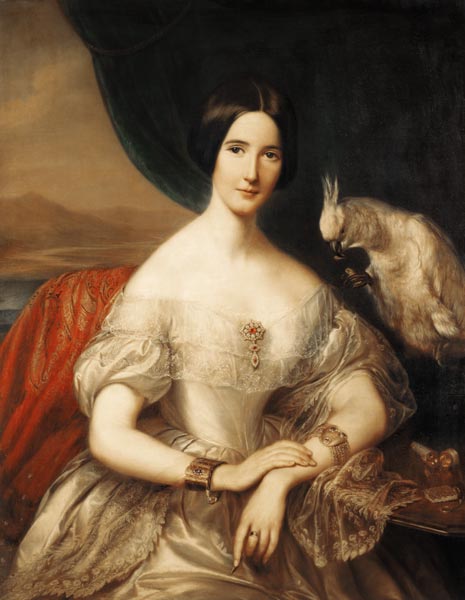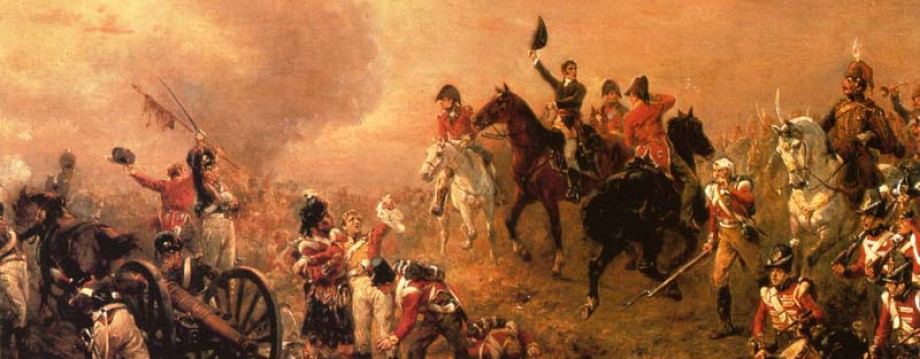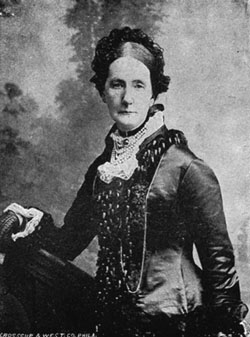
Today we see female philanthropists on a daily basis in our news and in the pages of our glossy magazines. Think, for example, of Ophrah Winfrey, who has given tens of millions to charities over the years. When one acquires great wealth, it seems the natural step to start dealing it out to those less fortunate. Look back to the age of Victorian charity-giving, and we see a very different kind of philanthropist emerge from the urban sprawl of post industrial England . The emphasis was on moralising the subject, the aim being to help them onto the respectable path of productivity and hard work. Alcoholism, prostitution and vagrancy were seen as the moral ills of society. Women often took it upon themselves to help the ‘lower orders’. None did more, in her own way, than Angela Burdett-Coutts. This is her story.
Born Angela Georgina Burdett in 1814, Angela was the daughter of the Radical and popular politician Sir Francis Burdett and Sophia Coutts, the daughter of the famous banker Thomas Coutts. In 1837 she inherited the vast Coutts fortune on the death of Harriot Mellon, who had married Thomas Coutts in old age. Harriot came from a working background, but enjoyed a position of huge wealth and influence after her husband died, and bagged herself a Duchy to boot when she marryied the Duke of Argyll. She hand-picked Angela to become her sole successor. Angela was a quiet, prim and upright girl, well-educated and level headed. She did not succumb to the frivolities of her class like many of her peers. She became one of the wealthiest women in England, a position that bought her great power, but also a profound sense of duty to those around her who were less fortunate. It was reported that Angela inherited around £1, 800, 000 when Harriot died, making her the richest heiress in the country.
 <
<
Image: minrec.org
When Angela came of age, she did not follow the ‘normal’ route for women of her class by marrying and having children. Her vast wealth brought with it suitors, and many asked for her hand. To each she politely refused. Feeling that they were only interested in her for her money, and knowing that under English law the power over wealth was controlled by husbands, Angela retreated into a single, quiet life of philanthropy and friendship. True, she held many lavish parties at her inherited house of Holly Lodge in Highgate, but the majority of her time was spent in companion with people who were both serious and sensible.

Image: Holly Lodge, in Highgate.
Her philanthropic works are legendary. It is impossible to name them all here. Her first works perhaps are most famous as they so closely involved the help and friendship of Charles Dickens. Together they set up and ran the revolutionary Urania Cottage, which took women off the streets and re-trained them away from a life of prostitution and petty crime. Angela also supported and funded immigration to countries like Australia and Canada. Like many Victorian women of her time, Angela’s charity works often centred on moralising and reforming the lower classes. Although in hindsight this is seen as controlling these charity works were, in Angela’s case, not done out of a preconceived idea of superiority, but a genuine desire to help those less fortunate than herself. She had seen with painful clarity the sufferings of those living in the East End of London, the squalor, the crime and the hardship. She sought to alleviate some of this suffering, and poured money into re-housing, sanitation, schools and training centres, and green open spaces where children could play. She gave generously, but always oversaw the work her money achieved, and so aimed to diminish any mismanagement.
Angela was heavily involved in the establishment and development of both the National Society for the Prevention and Cruelty to Children (NSPCC) and the Royal Society for the Prevention of Cruelty to Animals (RSPCA). Without her continued financial support neither of these two now nationally important charities would have survived.
Angela was also a generous benefactor of the Church of England, being herself very religious. She funded several expeditions into Africa with the aim to spread the message of missionaries. Mostly these were failures, Africa being large non-Christian at this time. She founded many bishoprics is Australia and Canada, and was seen as a national hero there due to the thousands who benefited from her funds which allowed them to emigrate. She also set up her own church, St. Stephen’s, in the heart of the West-end, which still stands today.
In her personal life, Angela was devoted to her former governess and companion Mrs. Brown. She also developed a deep love and affection for the Duke of Wellington, to whom she proposed when she was 33 and he was 78. The proposal may seem shocking to us, but Angela had always had friends of all ages. She had grown up with Harriot happily married to her grandfather, who was double her age. Angela and the Duke were undoubtedly in love with each other and forever in each other’s company. Angela even had her own apartment at Stratfield Saye which had an enjoining staircase to the Duke’s quarters on the ground floor. But the Duke felt he could not accept her proposal, and wrote her a charming letter in which he said:
‘I have passed every Moment of the Evening and Night since I quitted you in reflecting upon our conversation of yesterday, Every Word of which I have considered repeatedly. My first Duty towards you is that of Friend, Guardian, Protector! You are Young, my Dearest! You have before you the prospect of at least twenty years of enjoyment and Happiness in Life. I entreat you again in this way, not to throw yourself away upon a Man old enough to be your Grandfather, who, however strong, Hearty and Healthy at present, must and will certainly in time feel the consequences and Infirmities of Age.’
His refusal did not break their relationship, in fact it bought them closer together. They remained constantly in touch until the death of the Duke in 1852. In 1878 tragedy struck again when Mrs. Brown passed away. Anyone who knew Angela knew that this would be a devastating blow, as she and Mrs. Brown had been inseparable for years. Angela wrote to a friend of the loss of ‘my poor darling, the companion and sunshine of my life for fifty-two years!’
Greatly shocked and isolated by the death of Mrs. Brown, three years later she shocked the nation in turn by announcing her marriage to the American Ashmead Bartlett. She was 67 and he was only 29. Bartlett had been acting as one of Angela’s secretaries for many years and she had known him since he was a boy. By marrying a foreigner, Angela was forced to forfeit her claim to the Coutts fortune, although she remained handsomely provided for for the rest of her life. Even so, she was forced to stop many of the large annual donations which saw her projects flourish. The social housing schemes and church funds were the first to be halted, causing distress to both sides. But Angela could do not without the companionship of Bartlett, especially as so many of her close companions and family members had now died. Bartlett became and MP for Westminster in 1821, just as Angela had wanted. She herself never involved herself in politics, and was not allowed to involve herself in the business of the bank. Her talents laying in social work and social reform. She was also a skilled writer, which she worked hard at all her life. She published works on social reform and charity work on several occasions; often to great acclaim.
Angela lived the rest of her long life in quiet companionship with Bartlett, traveling extensively. She spent much of the year either in Brighton or Corsica, but always loved to get back to London. She developed an extensive art collection, including Old Masters and contemporary pieces. When photography developed she kept extensive albums with images of herself and her numerous note-worthy friends, including Henry Irving, Princess Mary of Cambridge Duchess of Teck, Mr. Darbishire (the architect of her Columbia Square), and Sir James Brooke, the Rajah of Sarawak. Angela died of acute bronchitis on 20th December 1906. She lived a long and full life which was not without its personal tragedies and losses. As she married so late, she did not have any children, and so her title died along with her. Edward VII described her as ‘after my mother, the most remarkable woman in the kingdom’.








